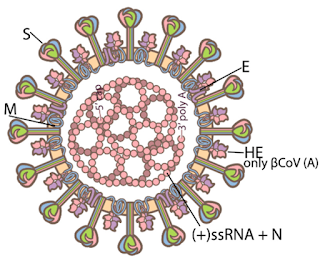Coronaviruses are large, roughly spherical particles with unique surface projections. Their size is highly variable with average diameters of 80 to 120 nm. Extreme sizes are known from 50 to 200 nm in diameter. The total molecular mass is on average 40,000 kDa. They are enclosed in an envelope embedded with a number of protein molecules. The lipid bilayer envelope, membrane proteins, and nucleocapsid protect the virus when it is outside the host cell.

How does it compare to other viruses?
research has shown that the viruses that have been identified and isolated can range in diameter size from 20 nm to as large as 500 nm. Aside from spherical virus particles like SARS-CoV-2, whose diameters provide information on their sizes, the length of rod- or filament-shaped viruses can measure to as long as 1,000 nm.
Viruses, particularly those that originate from animals like SARS-CoV-2, can differ greatly in their size. The smallest known animal viruses are icosahedrons, which belong to the Paroviridae and Picornaviridae families and can have a diameter ranging between 20 and 30 nm.
Comparatively, the largest and most complex virus currently known to man is the giant Mimivirus, which has a total particle diameter, of which includes the fibers that extend out from the capsid, of approximately 750 nm.

Comparing bacteria and SARS-CoV-2 sizes
The SARS-CoV-2 virus is a much smaller particle compared to the primary models for bacterial cell biology, including Bacillus subtitles, Staphylococcus aureus, and Escherichia Coli and Caulobacter crescentus, all of which have a cell volume that ranges from 400 nm to as large as 3 µm (3000 nm).
The large size of such bacterial species often contribute to their diverse reproductive strategies and ultimately maximize their ability to produce and release large offspring.
Whilst size comparisons between viruses and bacteria can be useful to researchers, it is also useful to compare the size of SARS-CoV-2 to other things that are encountered daily. For example, a dust mite is typically 200 µm in size. If we take a 100 nm SARS-CoV-2 particle, this makes the dust mite 2000 times larger.
